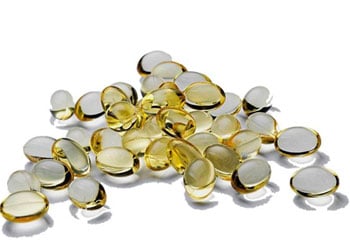VITAMIN D ISN’T JUST VITAL FOR STRONG BONES, BUT MANY BODY SYSTEMS, INCLUDING THE IMMUNE SYSTEM.

Researchers of yesteryears had the notion that vitamin D receptors were only located in certain areas of the body such as the bones, intestines and kidney.
Little did they know back then that vitamin D receptors are actually found in all parts of the body. We can thus make the conclusion that vitamin D is useful throughout the body; from strengthening the immune system to controlling cell growth.
There are more than 30,000 genes in the body, and vitamin D regulates more than 3,000 of them. The fact that every tissue in the body, including the brain, heart, breast, muscle and immune system, have receptors for vitamin D means that it is needed at optimal levels for these tissues to function well.
Influenza and vitamin D
Some studies have linked the body’s level of vitamin D and the risk of developing influenza. Those who have low vitamin D levels may have an increased risk of developing influenza.
There are vitamin D receptors found on cells in the immune system. Vitamin D works in the immune system by reducing levels of inflammatory proteins called cytokines, as well as increasing the number of antimicrobial proteins, which are naturally occurring antibiotics that destroy invading bacteria and viruses.
This combination of lowering inflammation and increasing antimicrobial defence can help an individual’s immune system fight infections more effectively.
These actions also reduce the risk of pneumonia, which is the primary complication of influenza.
Japanese researchers reported that daily supplementation of vitamin D3 reduces the risk of influenza A by over 40%.
Another study found that people who maintained normal or optimal levels of vitamin D levels developed fewer viral infections, including influenza, and were sick for fewer days than participants with lower levels of vitamin D levels (PloSONE, June 14, 2010).
Knowing the importance of vitamin D to our overall health begets our next question – where and how do we get vitamin D?
Sources of vitamin D3
The body makes vitamin D3 upon exposure to UV rays from sunlight. The amount of vitamin D3 made when the skin is exposed to sunlight depends on multiple factors such as age and skin colour, to how much of the skin is exposed, time of the day and which part of the world we live in.
Even cloud cover or the presence of haze affects vitamin D3 production.
Sunscreens also block some UV rays, which reduces the skin’s ability to produce vitamin D3. A mere SPF-8 sunscreen cuts off vitamin D3 production by 90%, whilst an SPF-30 cuts off a staggering 99%.
Hence, living in tropical sunny Malaysia does not mean that we are getting enough of this sunshine nutrient.
According to the US-based Vitamin D Council, a non-profit organisation responsible for disseminating accurate information on vitamin D, it is estimated that a third to half of the world’s population are vitamin D deficient.
Most white collar workers (i.e. professionals, managers, administrative staff) suffer in this aspect, as they spend all day in their offices.
Most people have the notion that they can get enough vitamin D from their diet, but according to a well-known professor of medicine, physiology and biophysics at Boston University Medical Center in the US, Dr Michael F Holick, it is virtually impossible to obtain an adequate amount of vitamin D from our diets.
He notes that more fortified food and beverages are likely to emerge in the market to fill the gap.
Few foods are naturally rich in vitamin D, so the main dietary sources of vitamin D are fortified foods. Good sources include fortified milk and cereal.
Natural sources of vitamin D include fatty fish such as mackerel, with smaller amounts in egg yolks and certain mushrooms.
Since there is difficulty obtaining sufficient levels of vitamin D through food or exposure to the sun, most nutritionists recommend taking vitamin D3 as a supplement.

There are two forms of vitamin D used in supplements. When choosing vitamin D supplements, its best to choose a supplement made with natural vitamin D3 (cholecalciferol) rather than D2 (ergocalciferol), which is made from fungi (yeast or mushrooms) upon exposure to UV light.
There is evidence that the body has a preference for D3 over D2, with more studies confirming that the body more readily uses D3 when both are in the body.
Point to note, whichever form you consume, your body will still have to convert it to the active form, and vitamin D3 gets converted five times faster than vitamin D2.
How much do you need
In 2010, the IOM (Institute of Medicine, US) proposed that the current RDA for vitamin D3 be increased from 400 International Units (i.u.) to 600 i.u. for children and adults up to 70 years of age, and 800 i.u. for those over 70.
Even this amount is way too low, according to the IOS (International Orthomolecular Society) in Canada, an organisation that specialises in researching nutritional medicine.
They reported that vitamin D level recommendations by the US government are way too low to prevent some basic health problems. This organisation, made up of medical doctors, is one of the most credible sources for information on nutritional medicine.
According to the International Orthomolecular Society, 2,000 i.u./day of vitamin D or more is needed for optimal health.
The Canadian Paediatric Society’s 2007 guidelines dosage recommendation is much higher at 2,000 i.u. a day. The safety limit for vitamin D3 is much higher than commonly believed.
Based on the latest evidence, it is determined that 10,000 i.u. a day is non-toxic. After all, your body makes 20,000 i.u. after 30 minutes at the beach between 10am and 2pm.
Published cases of toxicity, for which serum levels and doses are known, all involve intake levels of over 40,000 i.u. per day.
Many health experts recommend 1,000–2,000 i.u. of vitamin D3 daily.
So, remember that sensible sun exposure has countless health benefits, including improving immune health. Overall, the evidence suggests the benefits of sensible sun exposure outweigh the risks while maximising benefits of UV exposure.

